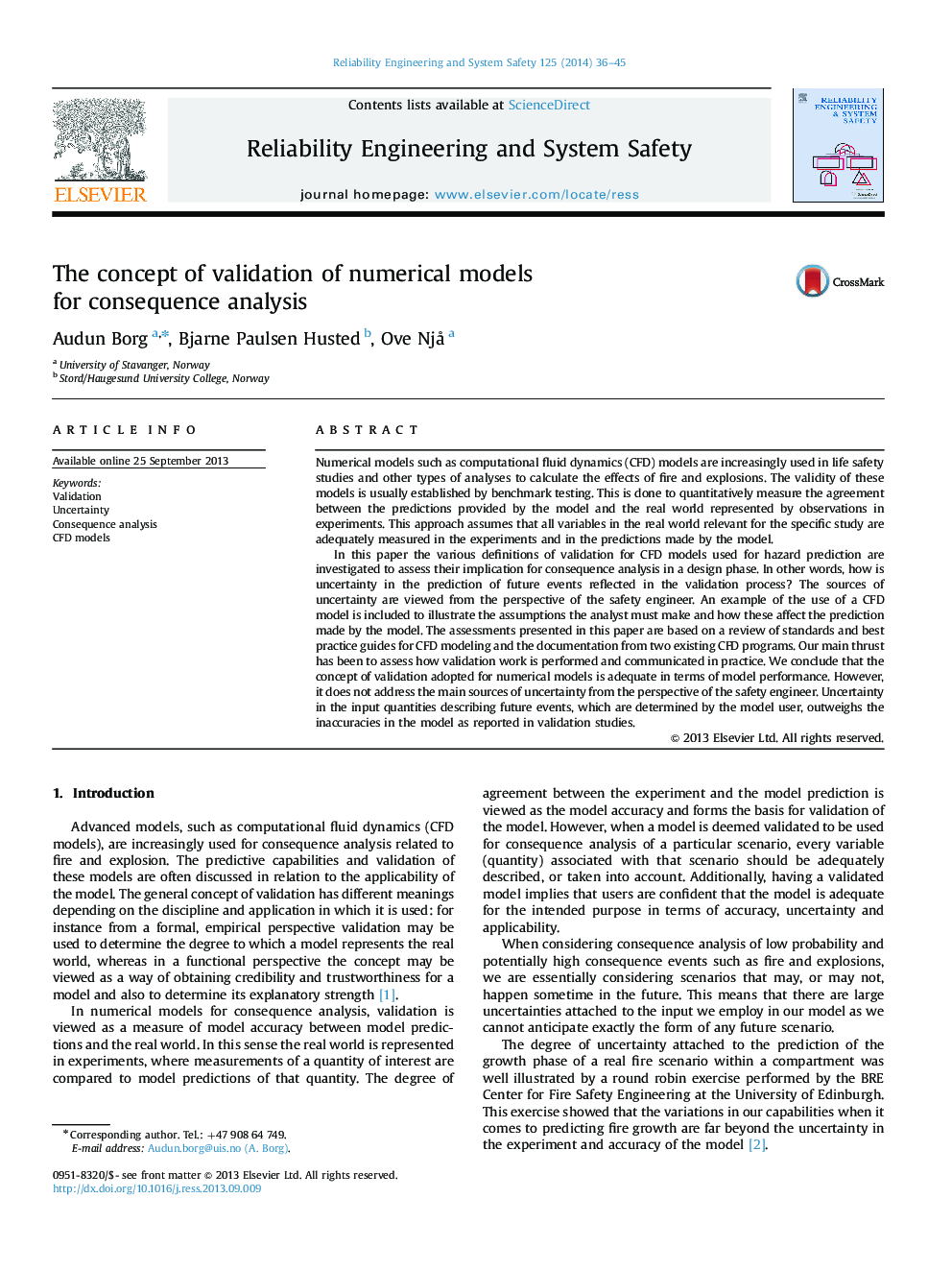| Article ID | Journal | Published Year | Pages | File Type |
|---|---|---|---|---|
| 7195777 | Reliability Engineering & System Safety | 2014 | 10 Pages |
Abstract
In this paper the various definitions of validation for CFD models used for hazard prediction are investigated to assess their implication for consequence analysis in a design phase. In other words, how is uncertainty in the prediction of future events reflected in the validation process? The sources of uncertainty are viewed from the perspective of the safety engineer. An example of the use of a CFD model is included to illustrate the assumptions the analyst must make and how these affect the prediction made by the model. The assessments presented in this paper are based on a review of standards and best practice guides for CFD modeling and the documentation from two existing CFD programs. Our main thrust has been to assess how validation work is performed and communicated in practice. We conclude that the concept of validation adopted for numerical models is adequate in terms of model performance. However, it does not address the main sources of uncertainty from the perspective of the safety engineer. Uncertainty in the input quantities describing future events, which are determined by the model user, outweighs the inaccuracies in the model as reported in validation studies.
Related Topics
Physical Sciences and Engineering
Engineering
Mechanical Engineering
Authors
Audun Borg, Bjarne Paulsen Husted, Ove Njå,
